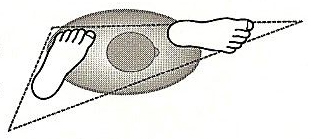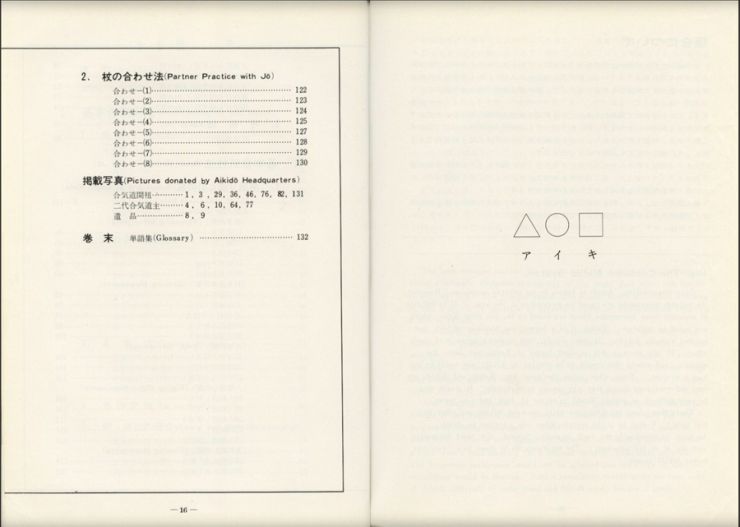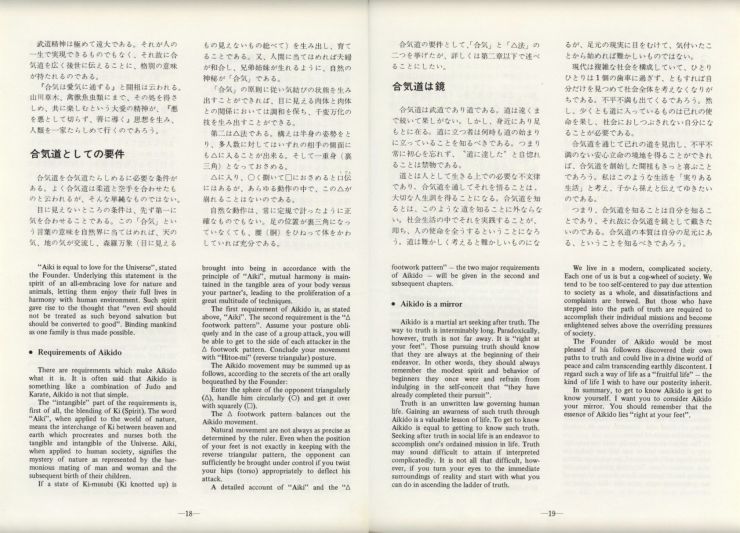Kuden
Kuden are not written down, they are oral instruction given "when the student is ready" to progress. In fact they are given "like a slap in the face".
Their "meaning" is meant to be grasped intuitively. The student would be approaching this understanding at the moment the kuden is given.
Kuden are "challenges" to the student that they must investigate and "find for themself".
"Enten Jizai" is but one. However the student themself must realise the concept and apply it in training. Not depending on the sensei who is an example not a teacher.
It is far better to cause someone to think than it is to tell them what to think.
Ni Soku
Aikido is not a circular art nor is it a responsive art.
Kuden: "The secret of Aikido is in the triangles" - Saito Shihan. "The art is executed from san kaku ho a triangular posture that offers the smallest target area to an opponent."

On contact the triangle sharpens into hito emi [make the body small]. The attacker must be made to spin turn and spiral around the Aikidoka not the opposite. Too often I have seen demonstrations with the Aikidoka spinning all over the place constantly vulnerable to counter strikes and resistance. Movement during combat must be spontaneous and natural. No one spins around in a natural manner.
Kuden: "Enter triangularly, control circularly and execute squarely [solid]" - O'Sensei.
"There are circles in Aikido but they have no diameter" - Sekiya Shihan.

Triangle, Circle & Square - Enter, Control & Execute.
The first page Morihiro Saito Shihans book, Traditional Aikido Vol 1, can be seen in the image below.

And in the first chapter of Traditional Aikido Vol 5, Saito Shihan goes into greater detail, (The text from the image is transcribed below:):
Requirements of Aikido
There are requirements which make Aikido what it is. It is often said that Aikido is something like a combination of Judo and Karate, Aikido is not that simple.
The "intangible" part of the requirements is, first of all, the blending of Ki (Spirit). The word "Aiki", when applied to the world of nature, means the interchange of Ki between heaven and earth which procreates and nurses both the tangible and intangible of the Universe. Aiki, when applied to human society, signifies the mystery of nature as represented by the harmonious mating of man and woman and the subsequent birth of their children.
If a state of Ki-musubi (Ki knotted up) is brought into being in accordance with the principle of "Aiki", mutual harmony is maintained in the tangible area of your body versus your partner's, leading to the proliferation of a great multitude of techniques.
The first requirement of Aikido is, as stated above, "Aiki". The second requirement is the "△ footwork pattern". Assume your posture obliquely and in the case of a group attack, you will be able to get to the side of each attacker in the △ footwork pattern. Conclude your movement with "Hitoe-mi" (reverse triangular) posture.
The Aikido movement may be summed up as follows, according to the secrets of the art orally bequeathed by the Founder:
Enter the sphere of the opponent triangularly △, handle him circularly ◯ and get it over with squarely ⬜.
The △ footwork pattern balances out the Aikido movement.
Natural movement are not always as precise as determined by the ruler. Even when the position of your feet is not exactly in keeping with the reverse triangular pattern, the opponent can sufficiently be brought under control if you twist your hips (torso) appropriately to deflect his attack.
A detailed account of "Aiki" and the "△ footwork pattern" - the two major requirements of Aikido — will be given in the second and subsequent chapters.

